CMDRF Kerala’s Lifeline for Transparent and Effective Disaster Relief
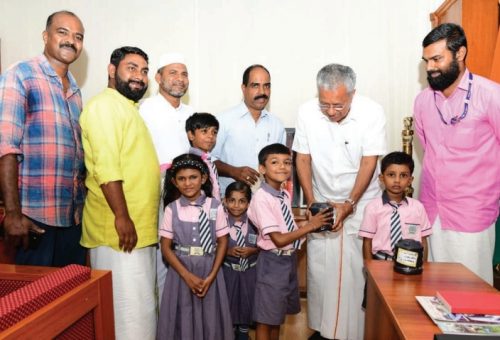 One of the most devastating disasters Kerala has witnessed, recently occurred in the Mundakkai and Chooralmala regions of Wayanad district. A vast area has virtually disappeared, along with homes, schools, roads, and essential livelihoods. Everything necessary for human life has been lost. The entire community must come together to rebuild these areas in the best possible way. The support of society as a whole is crucial for the government’s efforts to restore the lives of the people there. However, in such a situation, it is vital to take seriously the attempts by some to undermine the unity of the community. There has been an increase in false propaganda, urging people not to contribute to the Chief Minister’s Distress Relief Fund.
One of the most devastating disasters Kerala has witnessed, recently occurred in the Mundakkai and Chooralmala regions of Wayanad district. A vast area has virtually disappeared, along with homes, schools, roads, and essential livelihoods. Everything necessary for human life has been lost. The entire community must come together to rebuild these areas in the best possible way. The support of society as a whole is crucial for the government’s efforts to restore the lives of the people there. However, in such a situation, it is vital to take seriously the attempts by some to undermine the unity of the community. There has been an increase in false propaganda, urging people not to contribute to the Chief Minister’s Distress Relief Fund.
We must recognize these deceptive efforts. The reality is that the Chief Minister’s Distress Relief Fund is implemented with complete transparency and subject to rigorous auditing. It is the most efficient means of providing aid to those who deserve it. The beneficiaries of the Chief Minister’s Distress Relief Fund include those affected by natural disasters, individuals seeking treatment for serious illnesses, accident victims, and the dependents of those who have passed away. Additionally, the fund provides assistance to small businesses without insurance, those who lost their fishing equipment due to sea turbulence, and homeowners whose properties are damaged by fires.
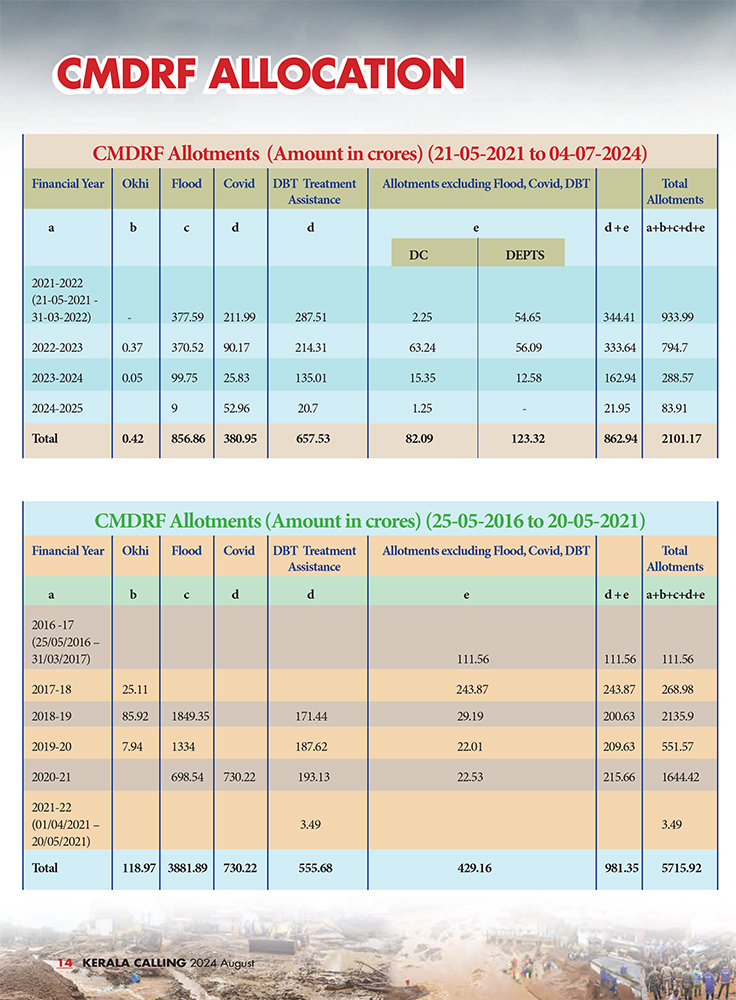
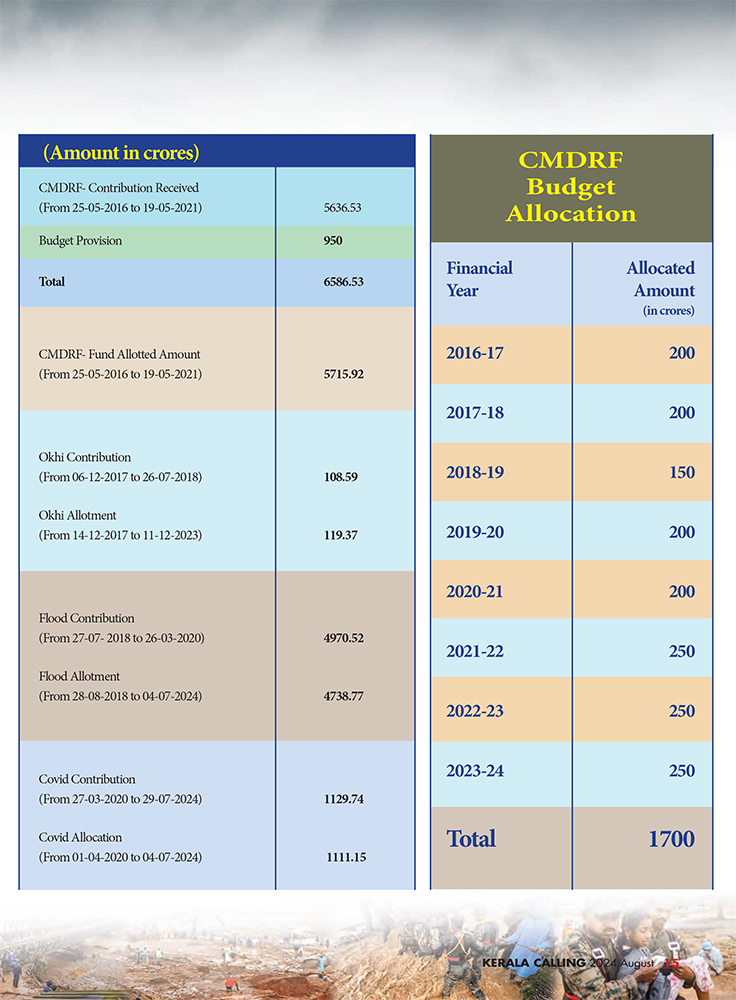
The contributions made by our beloved people from around the world who care deeply for our land are being delivered by the government to the deserving hands. The Pinarayi Vijayan government, which was elected in 2016, transformed the Chief Minister’s Distress Relief Fund into a systematic and transparent mechanism, eliminating bureaucratic hurdles and delays that previously obstructed the timely disbursement of funds to those in need. Today, applicants no longer need to visit offices in person at any stage, from submitting the application to receiving the funds in their bank accounts. Eligible individuals can submit applications online or offline, through Akshaya centres, representatives’ offices, or by mail. No recommendations are required to receive financial assistance. Once an application is submitted, anyone can track its progress using the docket number provided. Over the past seven and a half years, the government has disbursed ₹ 7,687 crore through the Chief Minister’s Distress Relief Fund. On average, this government has allocated ₹ 338 crore annually.
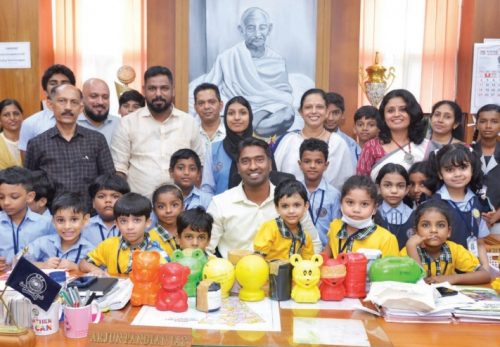 Since 2016, the government has implemented numerous measures to make the relief fund more efficient. Not only has the amount of assistance provided been increased, but the distribution process has also been made more transparent and streamlined. Additionally, the limits on the amount that can be sanctioned from the relief fund by the Chief Minister, the Revenue Minister, and District Collectors have been raised. Previously, the limits were ₹1 lakh, ₹5,000, and ₹2,000, respectively. These limits have now been increased to ₹3 lakh, ₹25,000, and ₹10,000, respectively. Furthermore, the Revenue Special Secretary has been authorized to sanction up to ₹15,000. For amounts exceeding ₹3 lakh, approval from the Cabinet is required before the funds can be allocated. The government has increased the annual income limit for applicants from ₹1 lakh to ₹2 lakh. When deficiencies in the medical certificates submitted with applications were noticed, the regulations were made stricter. Additionally, a mobile app was introduced to facilitate doctors in providing these medical certificates.
Since 2016, the government has implemented numerous measures to make the relief fund more efficient. Not only has the amount of assistance provided been increased, but the distribution process has also been made more transparent and streamlined. Additionally, the limits on the amount that can be sanctioned from the relief fund by the Chief Minister, the Revenue Minister, and District Collectors have been raised. Previously, the limits were ₹1 lakh, ₹5,000, and ₹2,000, respectively. These limits have now been increased to ₹3 lakh, ₹25,000, and ₹10,000, respectively. Furthermore, the Revenue Special Secretary has been authorized to sanction up to ₹15,000. For amounts exceeding ₹3 lakh, approval from the Cabinet is required before the funds can be allocated. The government has increased the annual income limit for applicants from ₹1 lakh to ₹2 lakh. When deficiencies in the medical certificates submitted with applications were noticed, the regulations were made stricter. Additionally, a mobile app was introduced to facilitate doctors in providing these medical certificates.
The maximum amount of ₹4 lakh can now be sanctioned for damages to homes caused by fires, and up to ₹2 lakh can be provided to those who lose their livelihood due to sea turbulence. The financial assistance for the dependents of those who die in accidents has been increased to ₹1 lakh.Furthermore, even if someone has already received financial aid for treatment of critical illnesses like cancer or kidney disease, they are now eligible to apply again after two years. Through the Chief Minister’s Distress Relief Fund, financial assistance amounting to around ₹57 crore has been provided to the victims of endosulfan. During the recent flood phase, a total of ₹4,970.52 crore was received as contributions to the Chief Minister’s Distress Relief Fund. Of this amount, ₹3,881.89 crore was spent during the previous government’s tenure, and ₹842.88 crore has been spent during the current government’s tenure up until November 30.
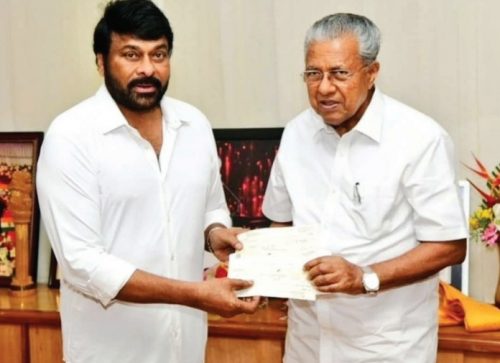 A total of ₹4,724.8 crore has been spent on flood relief. Additionally, ₹961.62 crore was allocated for the Chief Minister’s Local Road Reconstruction Project, which was initiated to restore local roads damaged during the floods. A loan scheme named “Ujjivan” was also introduced to help disaster-affected individuals who lost their livelihoods due to the floods to restart their means of livelihood. Through this scheme, financial assistance of up to ₹2 lakh was made available. As Ockhi disaster relief, ₹118.97 crore was allocated during the previous government’s tenure, and ₹37 lakh during the current government’s tenure, bringing the total to ₹119.34 crore. Contributions to the CMDRF during the Ockhi phase amounted to ₹108.59 crore. Financial assistance of ₹20 lakh each was provided to the dependents of fishermen who lost their lives in the disaster and to the families of those who went missing. Regarding the COVID-19 pandemic, ₹1,129.74 crore was received as contributions to the relief fund, out of which ₹1,058.21 crore was spent on relief efforts.
A total of ₹4,724.8 crore has been spent on flood relief. Additionally, ₹961.62 crore was allocated for the Chief Minister’s Local Road Reconstruction Project, which was initiated to restore local roads damaged during the floods. A loan scheme named “Ujjivan” was also introduced to help disaster-affected individuals who lost their livelihoods due to the floods to restart their means of livelihood. Through this scheme, financial assistance of up to ₹2 lakh was made available. As Ockhi disaster relief, ₹118.97 crore was allocated during the previous government’s tenure, and ₹37 lakh during the current government’s tenure, bringing the total to ₹119.34 crore. Contributions to the CMDRF during the Ockhi phase amounted to ₹108.59 crore. Financial assistance of ₹20 lakh each was provided to the dependents of fishermen who lost their lives in the disaster and to the families of those who went missing. Regarding the COVID-19 pandemic, ₹1,129.74 crore was received as contributions to the relief fund, out of which ₹1,058.21 crore was spent on relief efforts.
The previous LDF government provided ₹984.84 crore in financial assistance for medical treatment through the Chief Minister’s Distress Relief Fund. Up until November 2023, the current government has spent ₹800.29 crore for this purpose. This amount includes ₹123.32 crore provided through various departments and ₹79.18 crore allocated to District Collectors. The contributions to the Chief Minister’s Distress Relief Fund come from those who love and care for our land, given for the welfare of our community. The government spends these funds with the utmost caution and integrity. The funds received in the relief fund are subject to auditing by the Comptroller and Auditor General (CAG), and the accounts are also presented in the state legislature. Additionally, the details are made available to the public on the official website. The government is committed to using the relief fund in a flawless and effective manner to ensure the welfare of our land and its people.


